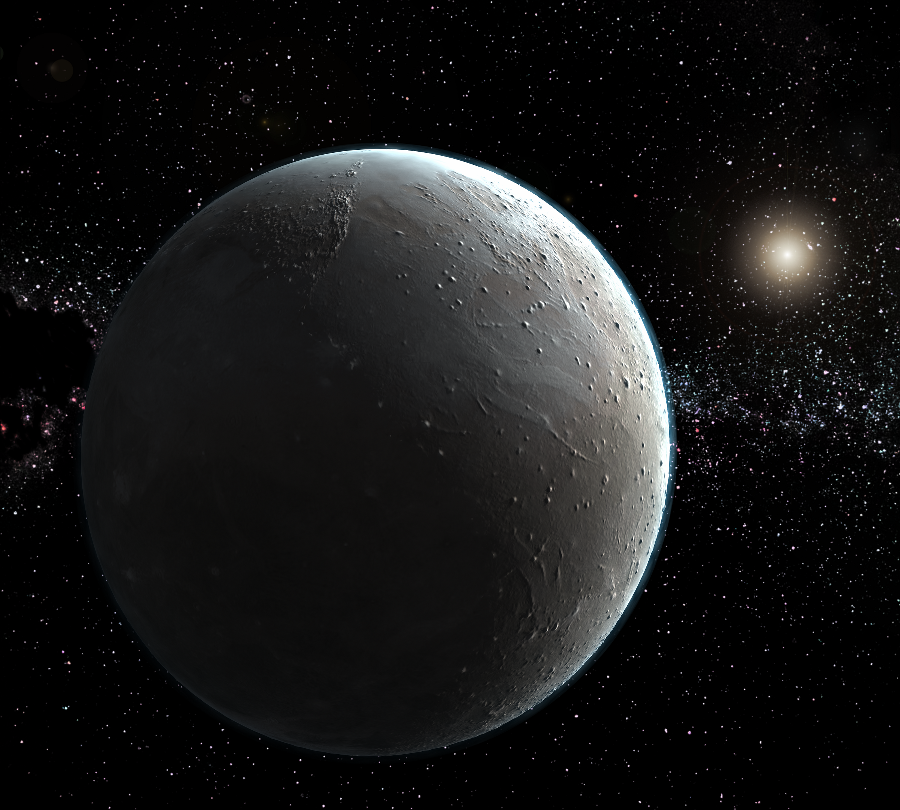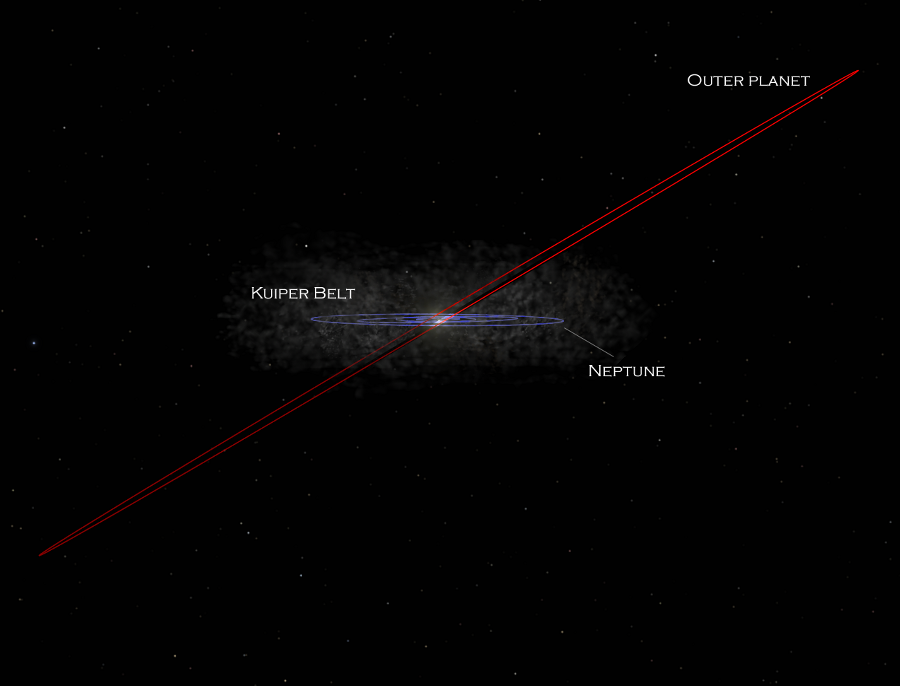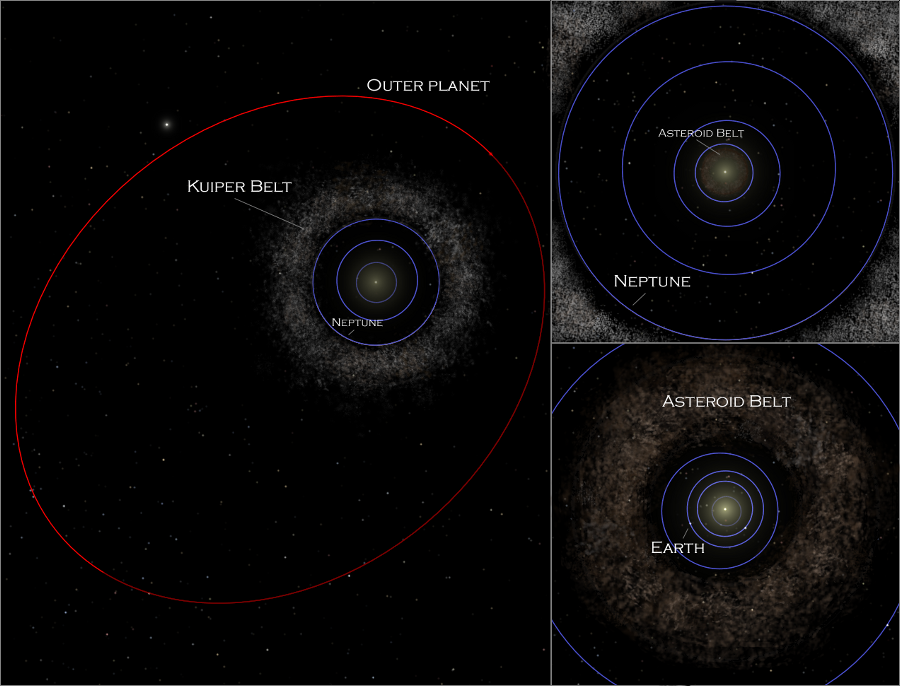|
|
||
|
..
Scientists discover solar system's
'Planet X'
Scientists at a Japanese university believe another planet - up to two-thirds the size of the Earth - is orbiting in the far reaches of our solar system. Researchers at Kobe University in western Japan say theoretical calculations using computer simulations led them to conclude it was only a matter of time before the mysterious 'Planet X' was found. "The possibility is high that a yet unknown, planet-class celestial body, measuring 30 percent to 70 percent of the Earth's mass, exists in the outer edges of the solar system," Kobe University said in a statement. "If research is conducted on a wide scale, the planet is likely to be discovered in less than 10 years." Pluto disqualified The research, led by Kobe University professor Tadashi Mukai along with researcher Patryk Lykawka, will be published in the April issue of the US-based Astronomical Journal. Their study comes two years after school textbooks had to be rewritten when Pluto was booted out of the list of planets. Pluto was discovered by the American astronomer Clyde Tombaugh in 1930 in the so-called Kuiper belt, a chain of icy debris in the outer reaches of the solar system. In 2006, nearly a decade after Tombaugh's death, the International Astronomical Union ruled that the celestial body was merely a dwarf planet. Astronomers concluded that Pluto's oblong orbit overlapped with that of Neptune, excluding it from being a planet. Elliptical solar orbit Instead it defined the solar system as consisting solely of the classical set of Mercury, Venus, Earth, Mars, Jupiter, Saturn, Uranus and Neptune. Planet X -- so called by scientists because it has yet to be found -- would have an elliptical solar orbit like Earth, the Kobe University team said, estimating its radius was 15 to 26 billion kilometres. The team noted that more than 1,100 celestial bodies have been found in the outer reaches of the solar system since the mid-1990s. Researchers have set up a theoretical model looking at how the remote area of solar system would have evolved over the past four billion years. "In coming up with an explanation for the celestial bodies, we thought it would be most natural to assume the existence of a yet unknown planet," the university said in its statement. http://news.sbs.com.au/worldnewsaustralia/scientists_discover_solar_system39s_39planet_x39_541620 |
||
| What is the
latest research
for the discovery of a planet X?
The Japanese found something? Recently in 2008, Japanese Astronomers at Kobe University lead by Dr. Mukai have plotted a planet with a diameter at least the size of earth should exist in our solar system on a highly elliptical orbit.
..
I contacted Dr. Mukai to ask about the size of Planet X he was projecting. He was kind enough to share this information below. SOURCE: Xfacts ********
Thank you for sending me information. (Answer from Mukai) Its diameter is expected as 10,000-16,000km (roughly the same as the size of earth). Other details for Planet X is shown in the web site at http://www.org.kobe-u.ac.jp/cps/press080228_j.html Unfortunately, most of the news in Japanese, but you can get more from PDF file in item 1). Best regards. Tadashi Mukai
This once again raises the Astronomical community eye to the question of a planet x, another planet in our solar system beyond Pluto. SOURCE: Xfacts |
||
| Title:
AN OUTER PLANET BEYOND PLUTO AND ORIGIN OF THE TRANS-NEPTUNIAN BELTARCHITECTURE Accepted to The Astronomical Journal – 11/Dec/2007 http://harbor.scitec.kobe-u.ac.jp/~patryk/Patryk-Planetoid.pdf |
||
| FAIR USE NOTICE: This page contains copyrighted material the use of which has not been specifically authorized by the copyright owner. Pegasus Research Consortium distributes this material without profit to those who have expressed a prior interest in receiving the included information for research and educational purposes. We believe this constitutes a fair use of any such copyrighted material as provided for in 17 U.S.C § 107. If you wish to use copyrighted material from this site for purposes of your own that go beyond fair use, you must obtain permission from the copyright owner. | ||
|
|




